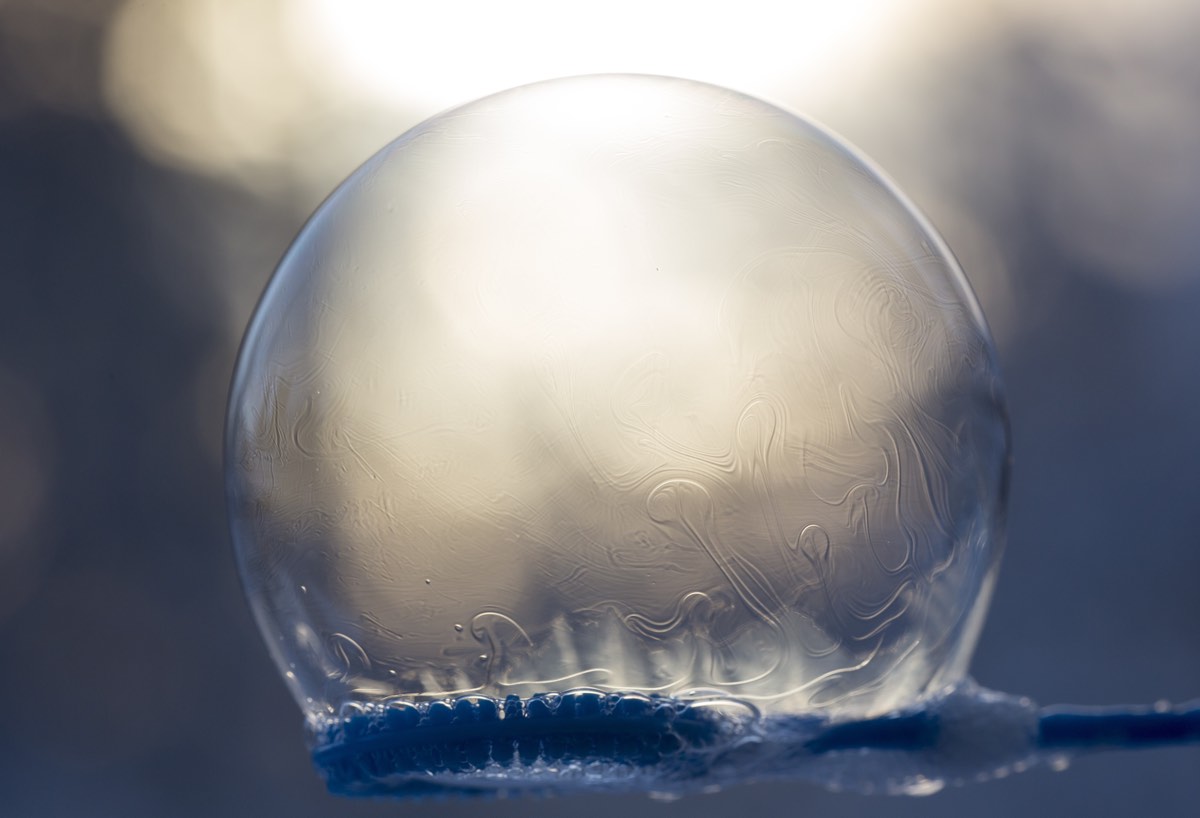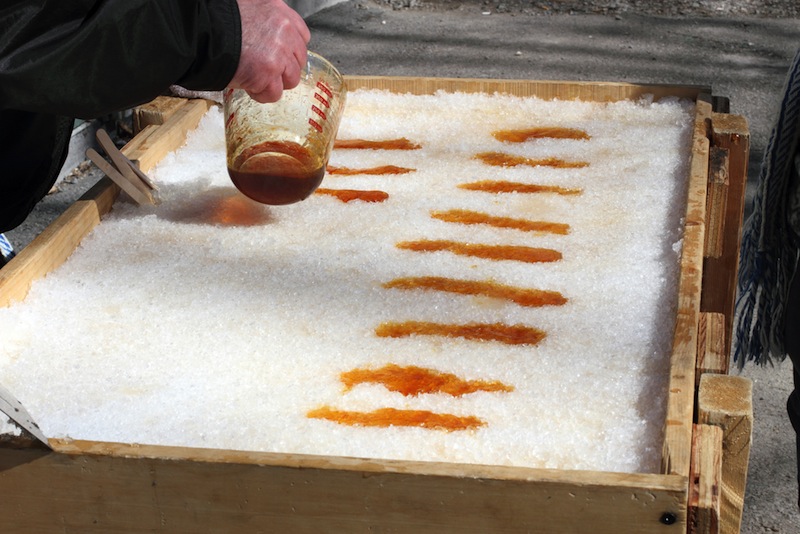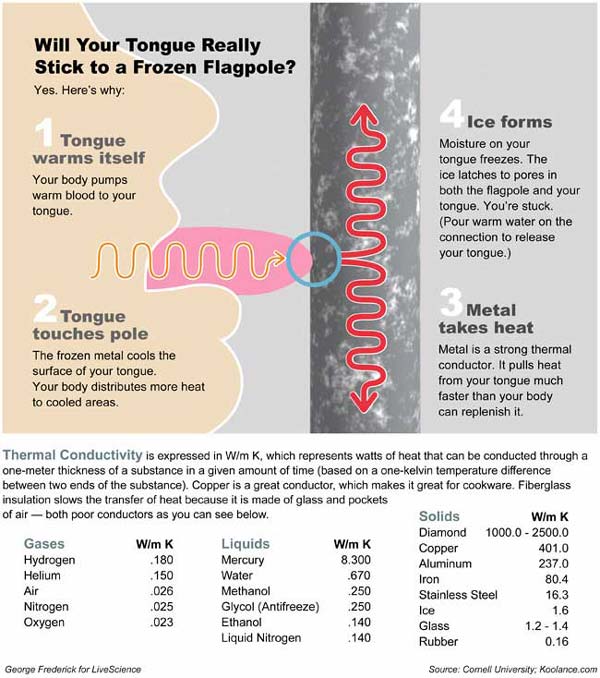Frozen Family Fun: Try These Cold-Weather Science Experiments

Record-cold temperatures sweeping across parts of the Midwest, East Coast and Southeast likely have many shuttered indoors with the heat cranked up. Lengthy stints inside can be a recipe for cabin fever.
For those looking to keep their kiddos occupied and have chill family time, there's a way to use the extreme cold for some entertainment (and sneak in a little science education, too). Here, LiveScience has rounded up a few fun experiments that can be done with just a little time outdoors (make sure to bundle up!), from making frozen soap bubbles to creating your own colorful snow. (There are also some experiments to make sure the little ones don't try.)
Frozen bubbles
Kids love bubbles. And while summer is typically the time to crack open a bottle of bubbles, there's a way to make them work in the winter. If it's cold enough outside (Steve Spangler Science recommends temperatures below freezing, though he says the colder it is the better), you can make the bubbles freeze. The trick is to blow them up in the air so that they have time to freeze before hitting the ground or another surface. The bubbles will form crystalline patterns and some might break, looking a bit like the shell of a cracked egg. Don't have any bubble solution handy? The post also has a simple homemade recipe. [See More Science Experiments for Kids]
Maple syrup candy

Do just like Half Pint did in the "Little House on the Prairie" books and make your own maple syrup candy. Just heat butter and syrup together, according to this recipe, and after it cools, you can pour it onto fresh snow and it will harden into something like maple taffy. Yum!
Magic balloons
Okay, so maybe they're not magic, but they will seem that way to the kids, and this one is quite easy. Just inflate a balloon and and tie the end, then stick it outside and watch it deflate. Bring it back inside to warm up and watch it re-inflate. (This is a nice lesson in how the volume of a gas, in this case, air, changes with temperature, shrinking in the cold, as its density increases, and expanding in the heat, as its density decreases.)
Make your own snow
This one is for those of you experiencing really cold temperatures. Meteorologist Eric Holthaus demonstrates it nicely in a video posted to Youtube: If it's cold enough outside, you can take some boiling water throw it up in the air (make sure it will blow away from you), and it will freeze into snow. When Holthaus did his experiment in Viroqua, Wisconsin, it was minus 21 degrees Fahrenheit (minus 29 degrees Celsius) with a wind chill of minus 51 degrees F (minus 46 degrees C).
Don't run outside with a bowl of super-hot water just yet. Yes, the water will surely freeze into snow (temperatures are in the single digits and below in many spots), but before it does so some of the scalding water could burn your kid's skin.
Sign up for the Live Science daily newsletter now
Get the world’s most fascinating discoveries delivered straight to your inbox.
In a YouTube video posted Jan. 6, 2014, a Chicago man threw a pot of boiling water off his balcony, with some of the hot water landing on his girlfriend and him. In that same year, news reports suggest that some 50 people burned themselves with the icy experiment.
How does water turn into snow in the first place? Colder air holds less water vapor than warmer air, while the boiling water is giving off lots of water vapor (that's the steam you see rising from the pot). When the hot water is thrown into the cold air, the air gets more water vapor than it can hold, Mark Seeley, a climatologist at the University of Minnesota, explained previously to Live Science, so the water vapor clings to tiny particles in the air, crystallizing into snow. Seeley said the air must be quite cold to attempt this one, somewhere in the region of minus 30 degrees F (minus 34 degrees C) or lower.
On Dec. 28, 2017, atop Mount Washington in New Hampshire, where temperatures dropped to minus 31 degrees F (minus 35 degrees C), weather observer Adam Gill, of Mount Washington Observatory, carried out the snow-making trick, with the boiling water immediately freezing into crystals and rushing away in hurricane-force winds, according to a video of the experiment on Facebook.
Do NOT try this at home

One "experiment" to make sure the kids don't attempt is triple-dog daring anyone into sticking their tongue to that frozen flagpole. Maddie Gilmartin, 12, of East Kingston, N.H., gave this one a try and, sure enough, her tongue was frozen to the pole, as the New York Daily News notes. Her parents tried to blow warm air on her tongue and douse it with warm water to get it unstuck, but to no avail. Eventually the paramedics were able to free her; and her tongue is expected to recover, though it could take up to six months for the swelling to go down.
Why does this happen? The tongue is warm, and when it touches the frigid pole, the pole saps that warmth and cools the tongue, causing the body to send more heat to the cooled area. But the high thermal conductivity of the metal pole means it sucks up that warmth faster than the body can resupply it to the tongue. The upshot: The moisture on the tongue freezes in the pores of the tongue and the metal and, voila, you're stuck.
Editor's Note: This article was first published in 2014 and updated in 2017.
Original article on LiveScience.

Andrea Thompson is an associate editor at Scientific American, where she covers sustainability, energy and the environment. Prior to that, she was a senior writer covering climate science at Climate Central and a reporter and editor at Live Science, where she primarily covered Earth science and the environment. She holds a graduate degree in science health and environmental reporting from New York University, as well as a bachelor of science and and masters of science in atmospheric chemistry from the Georgia Institute of Technology.










